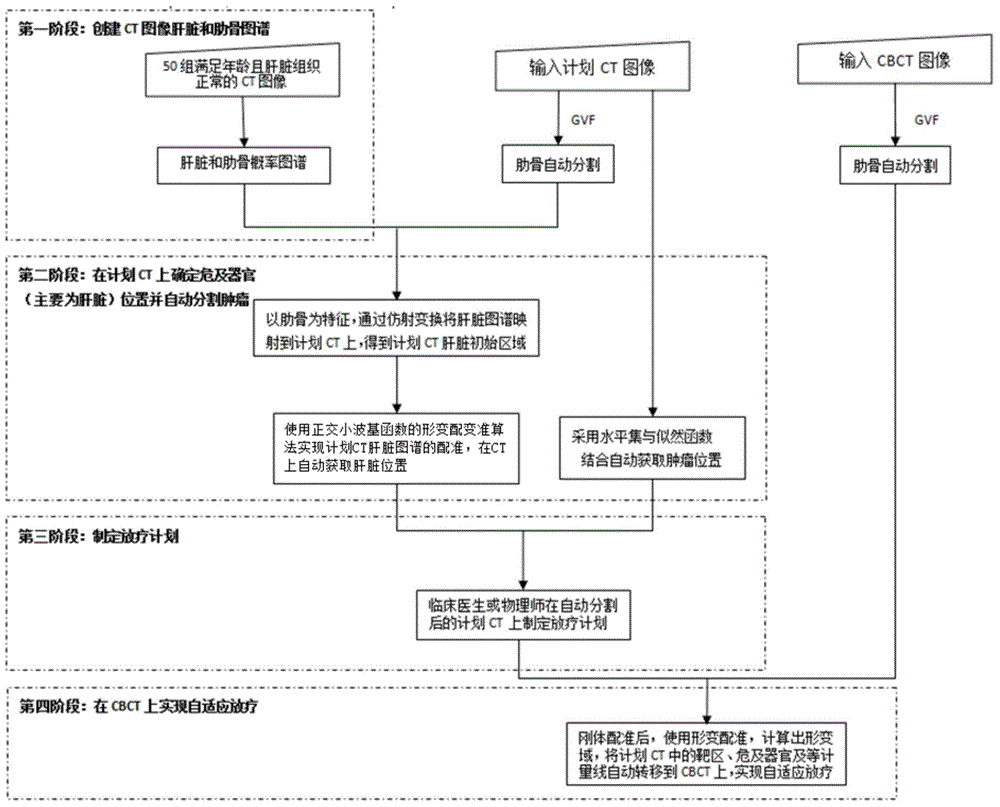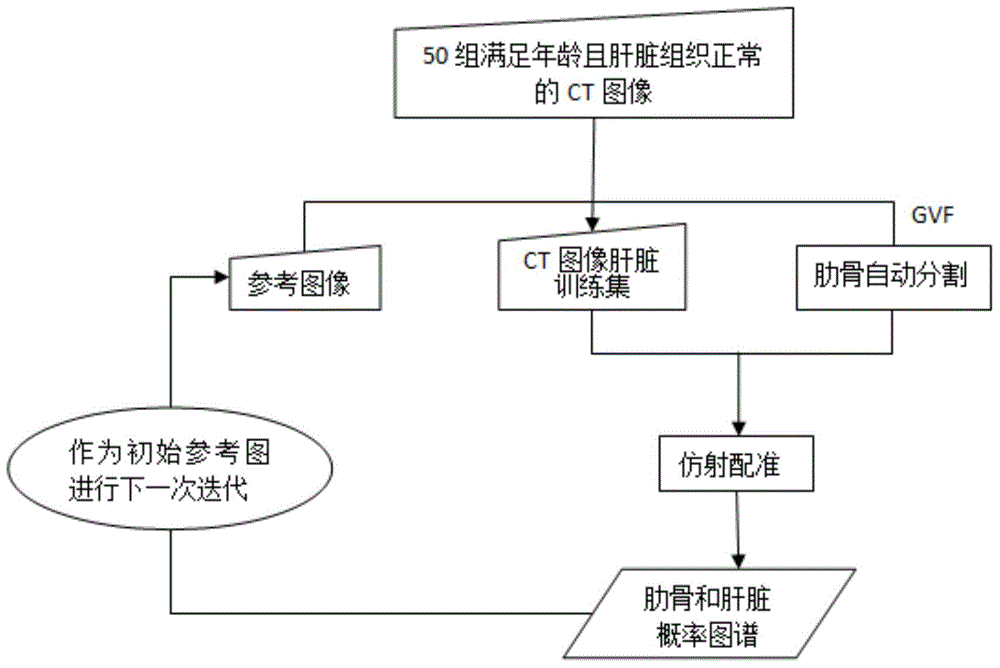Adaptive target area conversion method combining image segmentation and deformation registration technology
A deformation registration, target area technology, applied in image analysis, image enhancement, image data processing and other directions, can solve the problems of adjusting the positioning error, not achieving self-adaptation, time-consuming and labor-intensive, and achieving the effect of accurate liver boundary
- Summary
- Abstract
- Description
- Claims
- Application Information
AI Technical Summary
Problems solved by technology
Method used
Image
Examples
Embodiment Construction
[0054] The present invention will be further described below with reference to the accompanying drawings and embodiments.
[0055] For thoracic and abdominal tumors, the main organ at risk during radiotherapy is the liver. A normal liver atlas was established through 50 sets of CT images, and the atlas-based segmentation algorithm was used to achieve automatic segmentation of the liver tissue region in the planned CT of the patient. The method combined with the likelihood function model automatically extracts the thoracic and abdominal tumor regions on the planned CT to achieve the purpose of automatic segmentation of the planned CT. Afterwards, the deformation registration method based on the orthogonal wavelet basis function is used to automatically transfer various information in the planned CT to the CBCT through the calculated deformation domain.
[0056] The specific steps are as figure 1 shown:
[0057] Step 1: In order to realize the automatic segmentation of liver t...
PUM
 Login to View More
Login to View More Abstract
Description
Claims
Application Information
 Login to View More
Login to View More - R&D
- Intellectual Property
- Life Sciences
- Materials
- Tech Scout
- Unparalleled Data Quality
- Higher Quality Content
- 60% Fewer Hallucinations
Browse by: Latest US Patents, China's latest patents, Technical Efficacy Thesaurus, Application Domain, Technology Topic, Popular Technical Reports.
© 2025 PatSnap. All rights reserved.Legal|Privacy policy|Modern Slavery Act Transparency Statement|Sitemap|About US| Contact US: help@patsnap.com



